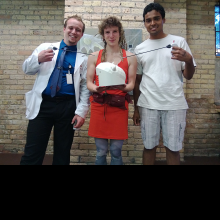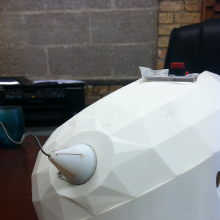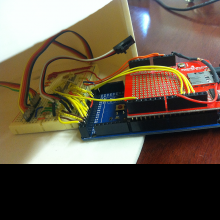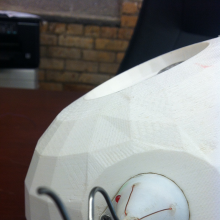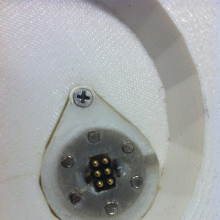For health service officers who wish to improve procedural surgical skills, our product is a physical training platform that provides quantifiable feedback. Unlike traditional subjective training approaches that offer only a personal interpretation of success, we offer a combined hardware and software educational architecture to provide a longitudinal training ground and through perfect practice, make a surgeon or medic’s tools natural extensions of his or her body.
The project is fundamentally driven by the capabilities of an Arduino microcontroller, but when scaled to production volumes any variety of microcontrollers or a dedicated PCB could be used. The microcontroller allows for analog data capture, logging and communication with a user’s PC via a custom-built user interface. While the communication is currently implemented using the USB transmission protocol, plans are already in place to implement a revised version leveraging Bluetooth. For the user, this means less troublesome wires and the capability to communicate with a wide variety of output devices. Mobile apps that would run the software on iPhone, android, or a web-based platform are all natural extensions of the presented architecture.
A functioning prototype for training medics in the use of a variety of surgical tools has been implemented and submitted for review. This trainer requires that users deftly articulate the tool they desire to practice on and use it to retrieve a small metal ring from a curved post. The user then places the ring at the base of another post at a separate location. A penalty is awarded any time the ring comes in contact with either post during the transfer task. A total time to complete the transfer, along with the number of penalized touches and touch contact time is reported to the user’s interface. The data are captured as a digital text file and may be stored for longitudinal assessment purposes. The contacts are sensed via capacitive touch sensors, and detect even the most minute contact between the posts and the rings. The learner’s tool will similarly trigger a touch, should it contact the post during the trial. While curved S-shaped posts are presented for review, the learner could be provided with a diverse collection of posts to practice different types of surgical maneuvering.

